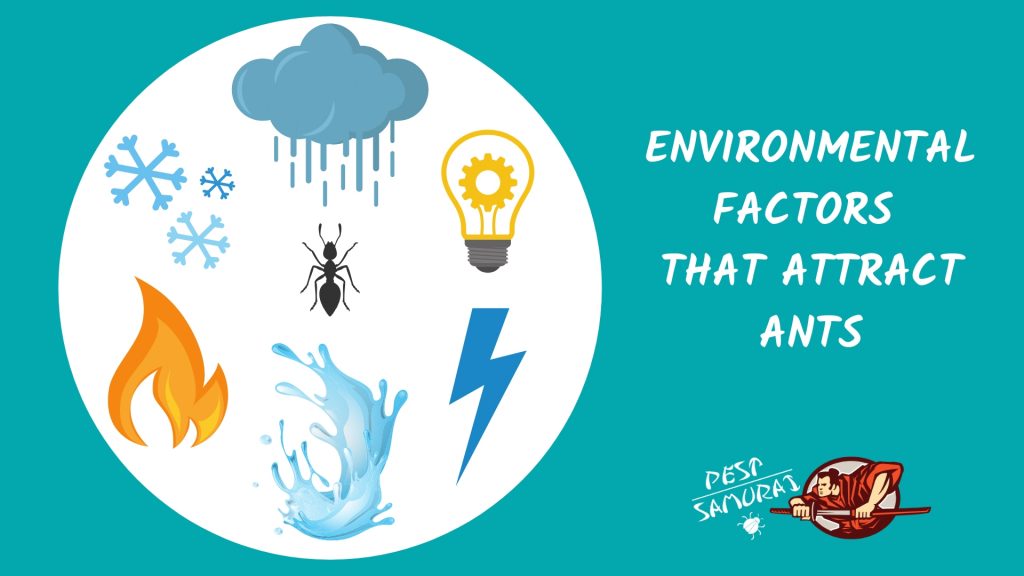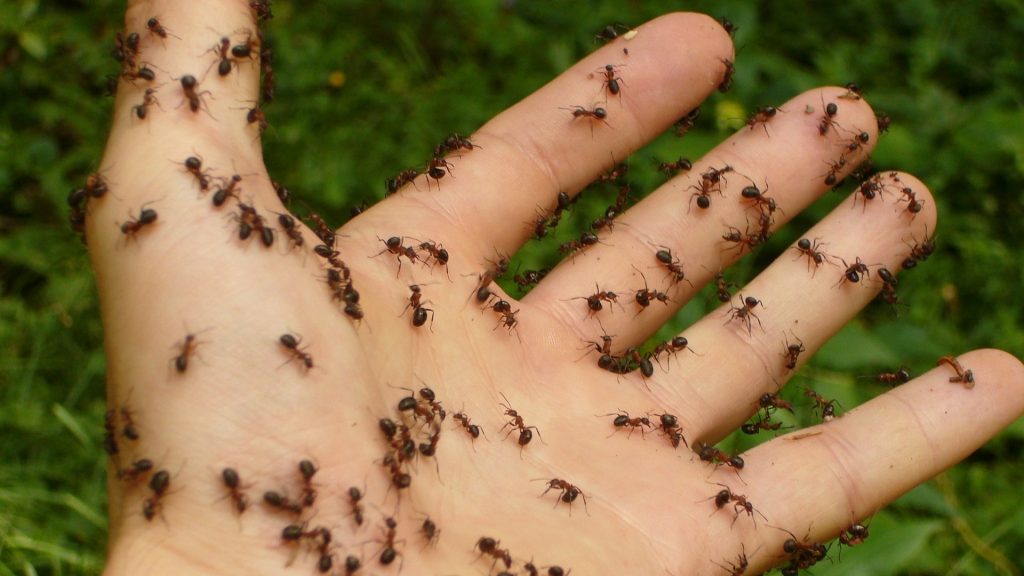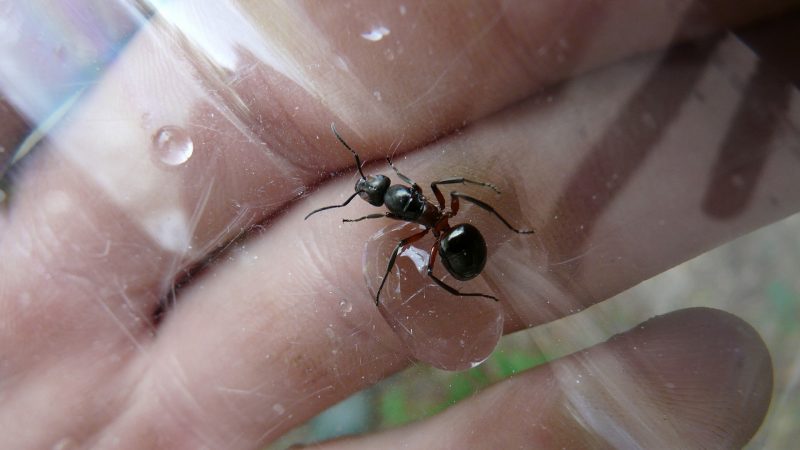Ants can be a troublesome pest in both homes and gardens, and several species can cause structural and economic damage to your property and carry viral and bacterial diseases. But there’s definitely a reason why they’re invading you.
So, what attracts ants? Ants are drawn to environments with water or moisture, mold growth, ample warmth, and have either a good light source or a substantial amount of darkness.
To know more about these environmental factors, this article discusses everything you need to know, including how to get rid of ants and preventing future infestations. Let’s start!
Environmental Factors That Attract Ants

Ants are considered year-round pests. There are several environmental factors that attribute to their widespread colonization of homes and properties. Therefore, if you see ants crawling in your home or garden, take strict measures to prevent their colonization before they cause any severe damage.
Here are some of the reasons why they may be attracted to your home:
Water

Moist and damp areas such as moist corners in your bathrooms, under the sink, tubs, moist basements, water heater, boiler, roof leaks, plant pots, and water pipelines near leakage points particularly attract ants.
During the dry season, to survive, ants are usually attracted to water leaks or flooded places. Most ants can get most of the water supplies from their food sources but some of them will make their shelters near water sources. Such ants include moisture ants, pharaoh ants, and carpenter ants.
Keep your toilet and kitchen clean and dry to prevent the infestation of ants in your home. Seal all the pipelines to cut off water sources that can attract ants.
Mold

Molds grow in wet places on dead organic material, and both (ants and mold) get attracted to similar environmental conditions. Mold does not attract ants in your home, per se. It will be more accurate to say that similar environmental factors attract ants and encourage mold growth in your house.
Some ant species, such as pharaoh ants and odorous house ants, are known to feed on mold and fungi. While it may not be accurate to say that mold specifically attracts ants, ants can be drawn to areas with mold as a potential food source
Keep your surroundings clean, maintain good sanitation, and block all the entry points to avoid molds and ant infestation in your home. You can also use ant-repellent herbs to distract ants and create barriers around your home.
Heat
Ants are attracted to warmth and are typically seen outside during summer. They make shelters near electrical appliances, water boilers, and water in general where the temperature is suitable for their survival. However, they cannot survive in extreme temperatures or long dry seasons.
While ants are attracted to warmth, extreme heat can damage their survival. Additionally, some species, such as Argentine ants, have been known to adapt to different temperature conditions and survive in various temperatures.
Place barriers or ant-repellent herbs around your home’s boundary to prevent ants from entering during the dry season or extreme conditions. You can also use other chemical pesticides to block the entry point of ants.
Related: Are Ants Attracted to Heat? | Fascinating Facts and Practical Implications
Light or Dark

Ants generally prefer dark environments, as it helps them remain undetected and increases their chances of survival. For instance, you will usually find them behind the cupboard, in cracks or holes, under sinks, tubs, near pipelines, etc.
This helps them to remain undetected, and they have higher chances of survival. Ants use chemical pointers and spatial memories to locate and move through dark and confined places.
However, some ant species, such as Argentine ants and flying ants, have shown positive phototaxis, meaning they are attracted to light sources. To prevent the entry of ants in dark places, regularly call plumbers for maintenance services and get rid of all potential shelter points of ants.
What Attracts Ants in the Winter?
Ants cannot thrive during the winter or rainy season and will die off when the weather conditions become extreme. Some ants move indoors and establish colonies where the temperature is higher than outside.
During winter and in snowy conditions, ants develop their colonies in homes near water heaters, hot water pipes, or boilers.
To prevent ants from establishing colonies indoors during winter, it’s vital to seal off all potential entry points, such as cracks in walls, doors, and windows. Additionally, regularly cleaning and drying areas where ants are likely to find food and water can help deter them from establishing colonies.
How to Attract Ants Intentionally

The most effective method to eradicate ant infestation is to use ant baits. They are used to intentionally attract ants to consume the bait and carry it back to their nest.
The consumption of the ant baits by the ant queen or other ants results in their death. Ant baits can also draw out ants from laptops or electrical outlets. Different types of ant baits are available commercially that can be highly beneficial in getting rid of ants.
It is necessary to understand the nature and behavior of ants towards specific food sources to select the perfect bait to eliminate the infestation of the targeted ant species. Here is the step-by-step guide on how to attract ants intentionally.
Step 1: Identify the Infested Area or Entry Points
If you plan to eradicate the ant infestation in your house or the fields, then the first step is to identify the infested area or entry point of ants in your home or farmland.
Ants mostly follow a distinct pattern or trail, which will help you to identify their shelters or entry points. Their selection of food and behavior will help you to identify their nature.
Step 2: Identification of Ants
Different species of ants show different behavior and orientations. As such, ant baits or insecticides that work for one species may not work for another species. Therefore, correctly identifying ants helps determine the perfect strategy to eliminate a particular variety of pests.
Step 3: Selection of the Perfect Bait
After identification of ant species, you can place the perfect ant baits at the entry points or near ant nests according to the company product guidelines. Different types of ant baits are available commercially, such as sugar-based ant baits, greasy or fat-based ant baits, or protein-based baits.
You could initially test a bait if it works or just read on the package for what types of ants that bait is intended for. You can also prepare homemade natural baits such as honey bait, sugar bait, peanut butter bait, or other fat or protein-based baits to lure ants out of their shelters.
Add borax or another insecticide in the home-based ant bait or treat ants with insecticide spray after luring them out of their shelters. Keep in mind that baits may take up to several weeks to completely eradicate large ant colonies.
- Attracts & Kills – Kills common household ants including...
- Kills the Ants You See & the Ones You Don't – As worker ants...
- Works Fast – You should see a significant decrease in the...
- Ready to Use – Place the bait stations, watch it attract ants,...
- Use Throughout Your Home – Place stations near areas where...
- Kills ants where they hide for up to 3 months
- After ants feed on the bait, they return to the colony and...
- For maximum effectiveness place all baits at the same time
- Use indoors in corners, along walls and near entry points
- Child-resistant
- Combat Max 2in1 kills the ants you see & the ones you don’t.
- Dual formula kills 11 types of ants, sugar & protein loving ants.
- Deliver insecticide into places where aerosol sprays cannot go.
- Fast acting formula in a convenient and ready to use bait.
- Transparent bait station for easy replacement.
Step 4: Eliminate the Factors That Can Attract Ants
Eliminate the factors that are attracting ants to your house or garden. Improper sanitation practices and food residues are the most prominent factors that cause ant infestations.
Maintain a clean environment and dispose of your leftovers and garbage daily. Seal all the containers and pipes to avoid re-establishing ant colonies in your house.
Do Ant Traps Attract More Ants?
Ant traps do not work like other insecticides and show slow but effective results. When ants are attracted to sugar-based baits or other ant baits, they leave a pheromone trail so that the other ants can follow them.
It takes some time for the ants to ingest these baits. In the meantime, these baits will lure more ants to them, but this does not matter as a result will always be the same—the entire ant colony will die.
Related: Do Dead Ants Attract More Ants? | The Play-Dead Phenomenon!
How to Attract Queen Ants?

If you use ant traps or baits, you do not need to attract the queen to eradicate the colony. Workers will take the poisonous bait to the queen, and this process will cause its death.
Nevertheless, you can catch the ant queen during nuptial flight or when it moves to other nests to establish a new colony. It is difficult to lure the queen ant out of its nest.
Some people use lamps or other light sources to irritate or annoy the ant colony so that the ant queen moves out of her shelter, but the success rate of this process is very low.
List of Sources
Hansen, L., Fredericks, J., & Henriksen, M. (2012). Ant Survey Executive Summary: Exploring America’s #1 Nuisance Pest.
Illinois Department of Public Health. (n.d.). Ants.
Nyamukondiwa, C., & Addison, P. (2014). Food preference and foraging activity of ants: recommendations for field applications of low-toxicity baits.
- How to Get Rid of Copperheads | Practical Guide - August 27, 2023
- How to Get Rid of Corn Snakes | What Makes Them Aggressive? - August 27, 2023
- How to Get Rid of Alligators | Safety Measures and Removal Methods - July 16, 2023




